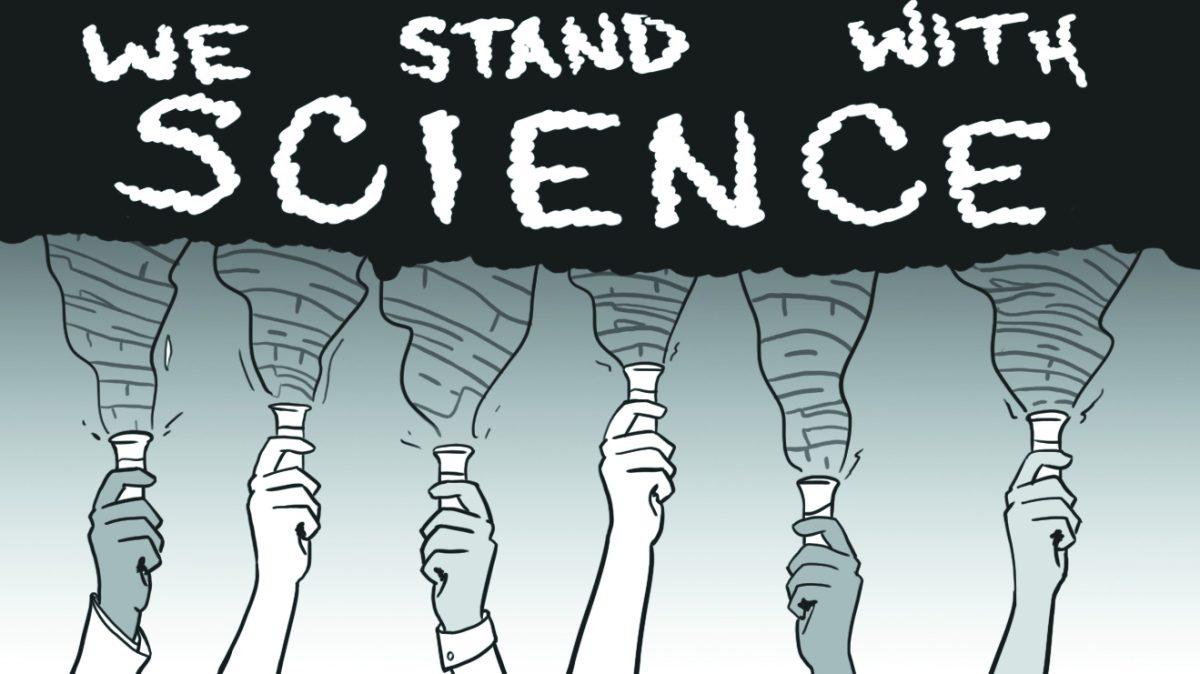Following the momentum garnered by the successful Women’s March, a March for Science is planned to take place in cities nationwide on April 22. Only by universally unifying all supporters of science can the March for Science have the potential to be a force for good.
The stated mission from the march’s website is, “The March for Science champions robustly funded and publicly communicated science as a pillar of human freedom and prosperity. We unite as a diverse, nonpartisan group to call for … political leaders and policy makers to enact evidence based policies in the public interest.”
Relative to this mission, the march will be a constructive pursuit only if it is being held to support common principles of scientific discovery and not just to support scientists. To see why it must focus on being inclusive, one must understand that there exist these two major issues within science: prejudices of ethnicity and sex, and a deep cultural divide.
There is a long history of minorities being denied access to scientific knowledge and rejected from publication or employment opportunities.
Problems of institutional and implicit bias within science and academia still exist today, and are hotly debated by the march organizers, as reported by Brian Resnick at Vox. If the march organizers claim it is for everybody, but they don’t invite everybody, or if the marchers welcome only certain supporters of science, then the march will feed into those unfair prejudices. To avoid this, it must be made very clear by the march organizers and especially by the demeanor of the marchers themselves that all supporters of science are strongly encouraged to participate.
Another divide within academia, detailed by C.P. Snow in his 1959 essay, “The Two Cultures,” is between the humanities and the sciences. The split in the 1990’s culminated into the so called “science wars” which were disagreements between several groups within and across the two cultures — positivist natural scientists, postmodernist philosophers, constructivist philosophers — about questions such as, “What is science?” and “Is science the best way of knowing anything?”
One does not have to tread very far into academic life to find the legacy of the divide between the humanities and the sciences, and how the science wars simply made it much worse.
The science wars did not produce a clear victor, but rather a new enemy — sometimes called the anti-science movement — which is the desire to deconstruct the relationship between science and state. In doing so, this anti-science movement becomes the common enemy of the two cultures: humanities and sciences. And so, assuming it is inclusive to both two cultures, the March for Science can be a seed for healing that great divide and then be a rallying cry against their shared enemy.
Science and state are not separate in America, unlike church and state, because scientific evidence is in principle how we legitimize public policy decisions. It is this anti-science movement’s aim to remove science as the arbiter of good and bad policy by manipulating scientific knowledge for political gain, intentionally misrepresenting statistics to justify political actions, using religious beliefs to legitimize public policy, simply ignoring scientific facts that are inconvenient to an agenda, and more.
As the march’s goal states, a mass demonstration in the name of science, not just scientists, is a defense of that relationship between science and state, because it will show that people choose science as their tool in finding truths about the world and society.
There are issues within science that must be worked out, and if done correctly the march can mediate resolutions among all supporters of science. Also, by being inclusive the march can be a banner of unification against increasing encroachments upon the important role science plays in our society.
Whether they are for reasons of politics, religion or anti-science, the encroachments all attempt to displace scientific truth with something else to legitimize policy decisions. Such attempts run counter to everything we know about what makes a society thrive, and they cannot go unanswered.
As long as the march is carried out in the name of inclusive nonpartisan science, then the march will be a force for good by publicly confronting prejudices within the scientific community, bridging the deep cultural divide within academia and unifying supporters of science across society and against a shared threat.






